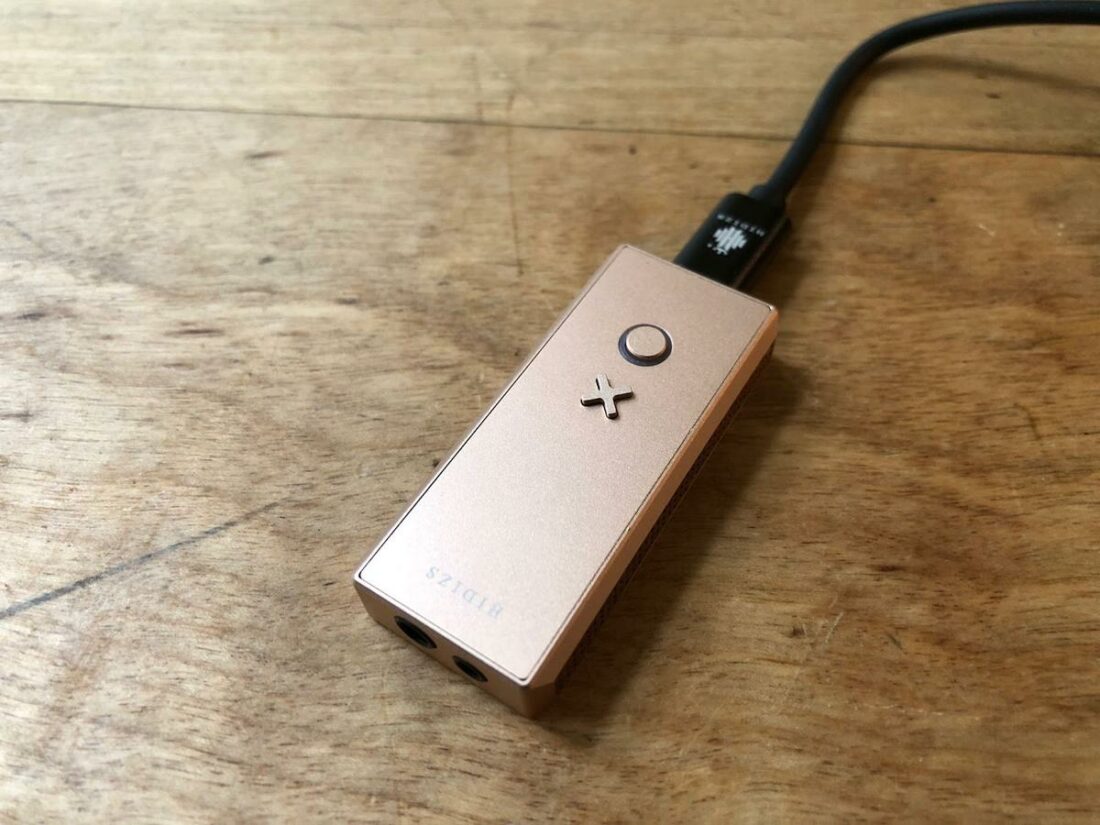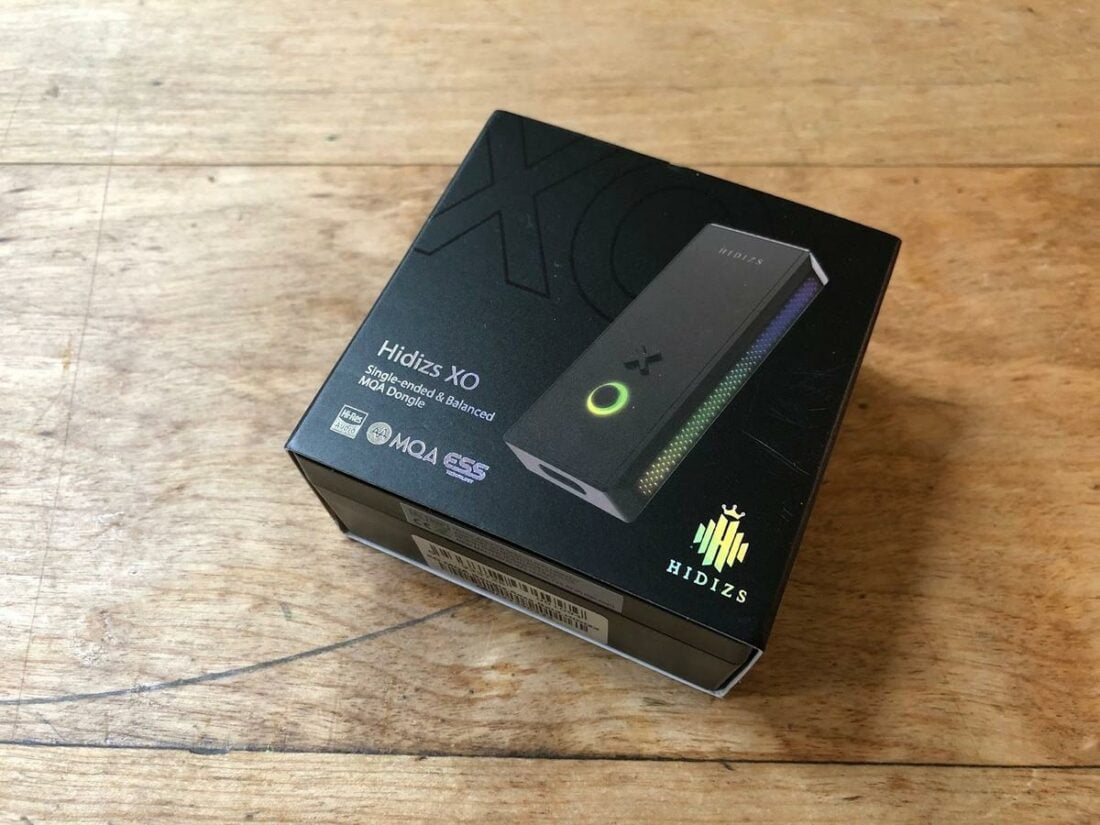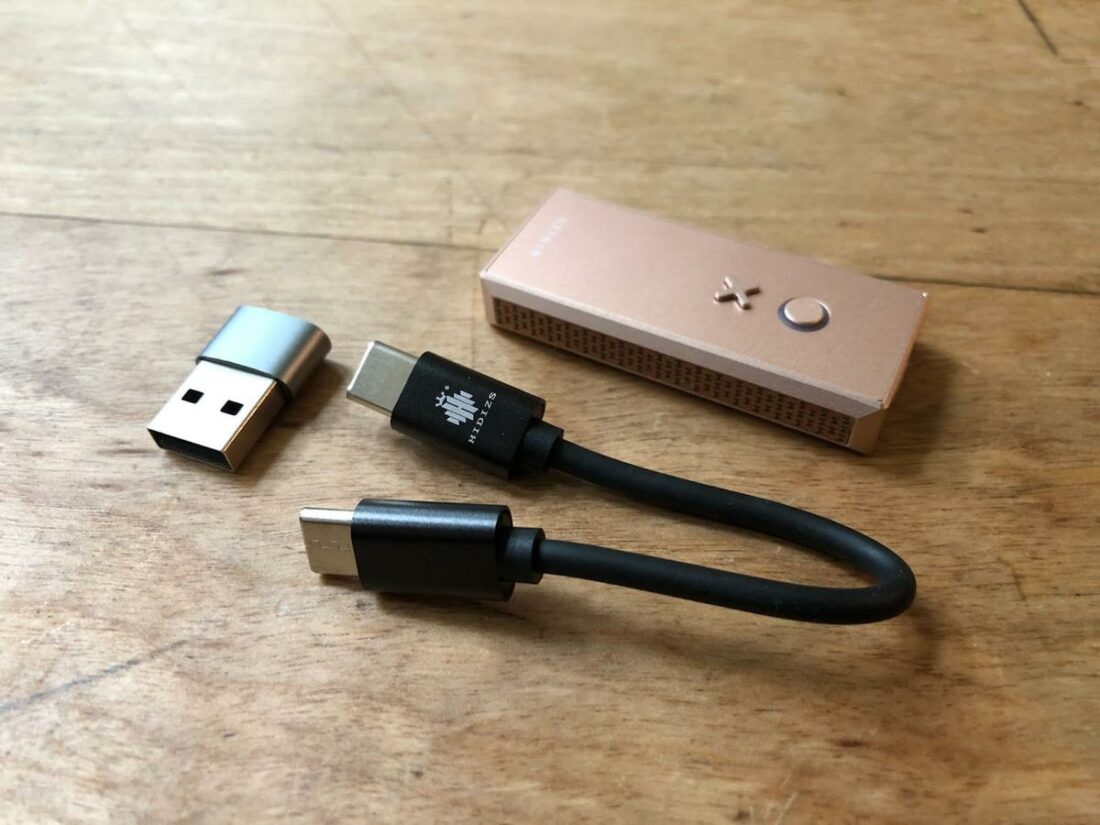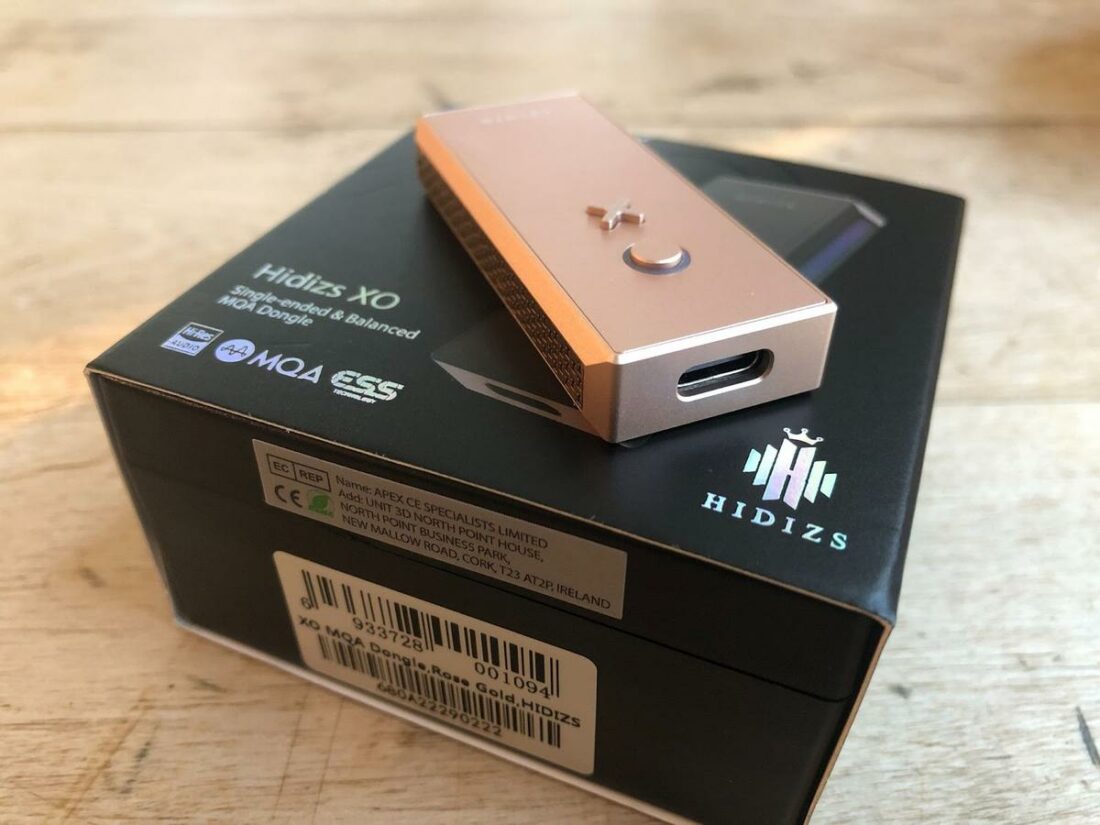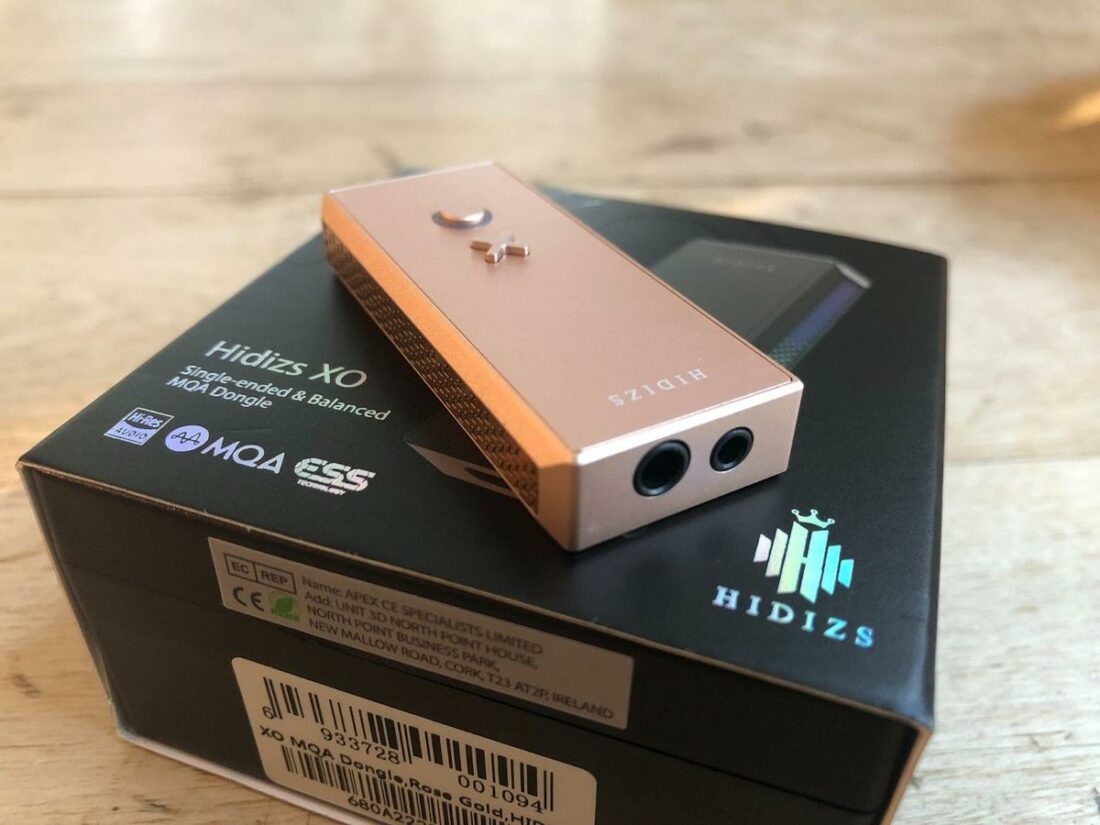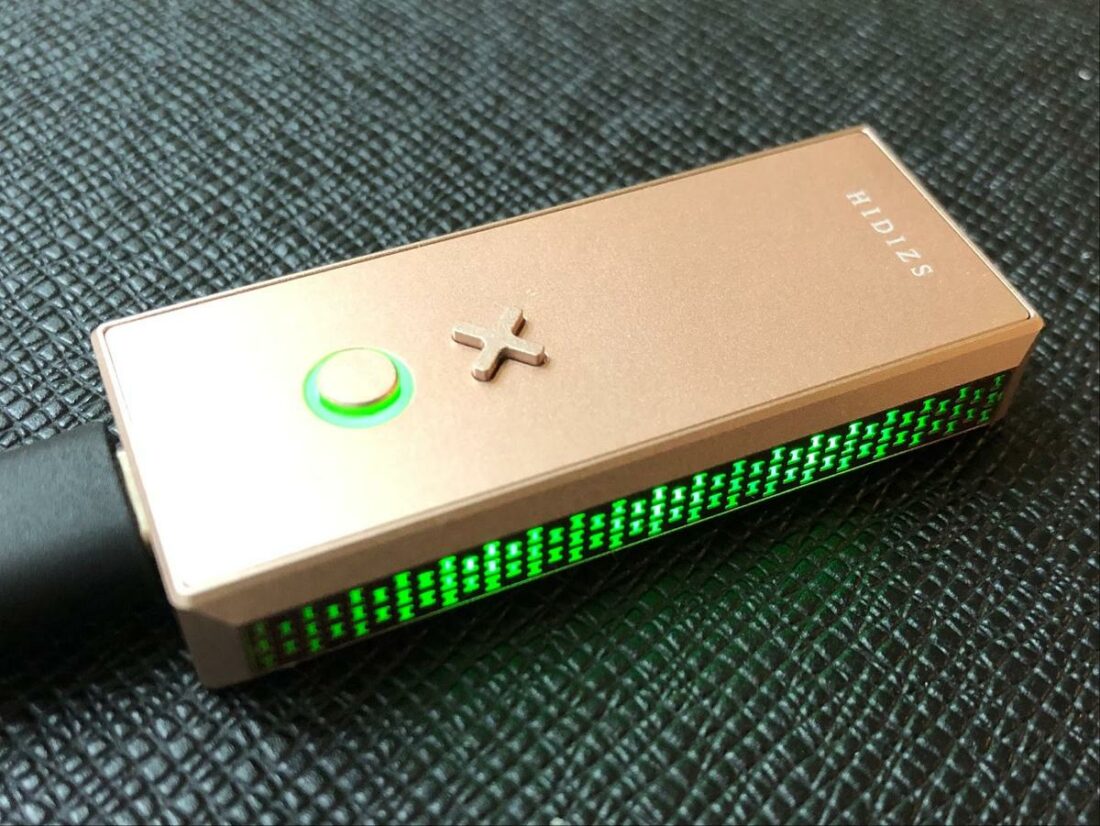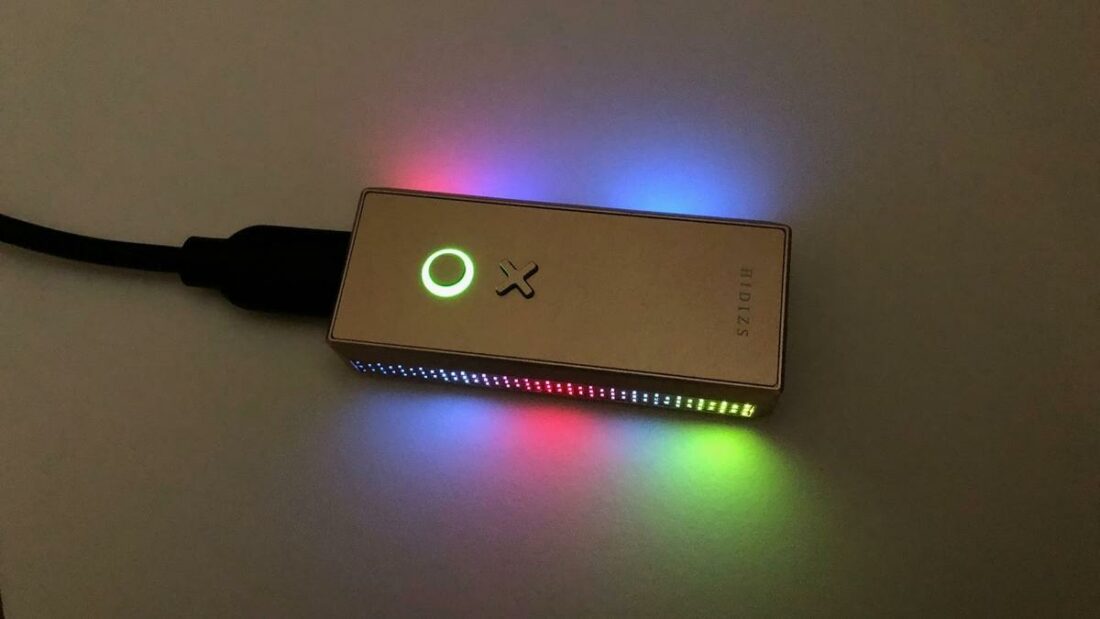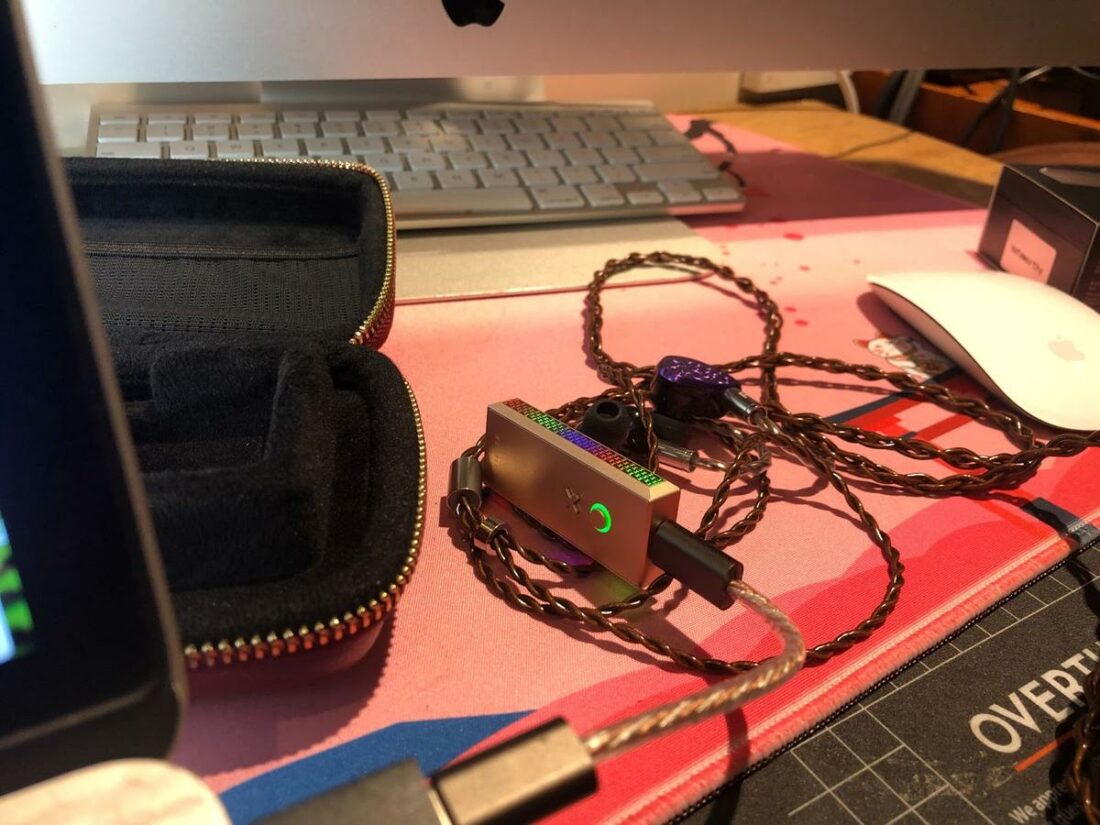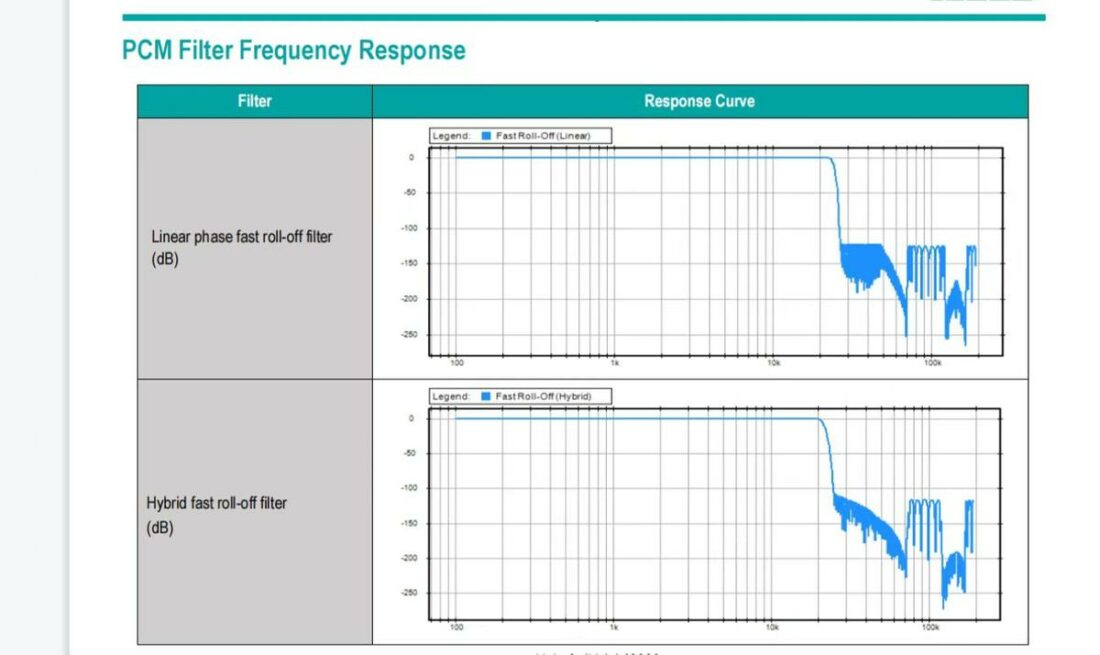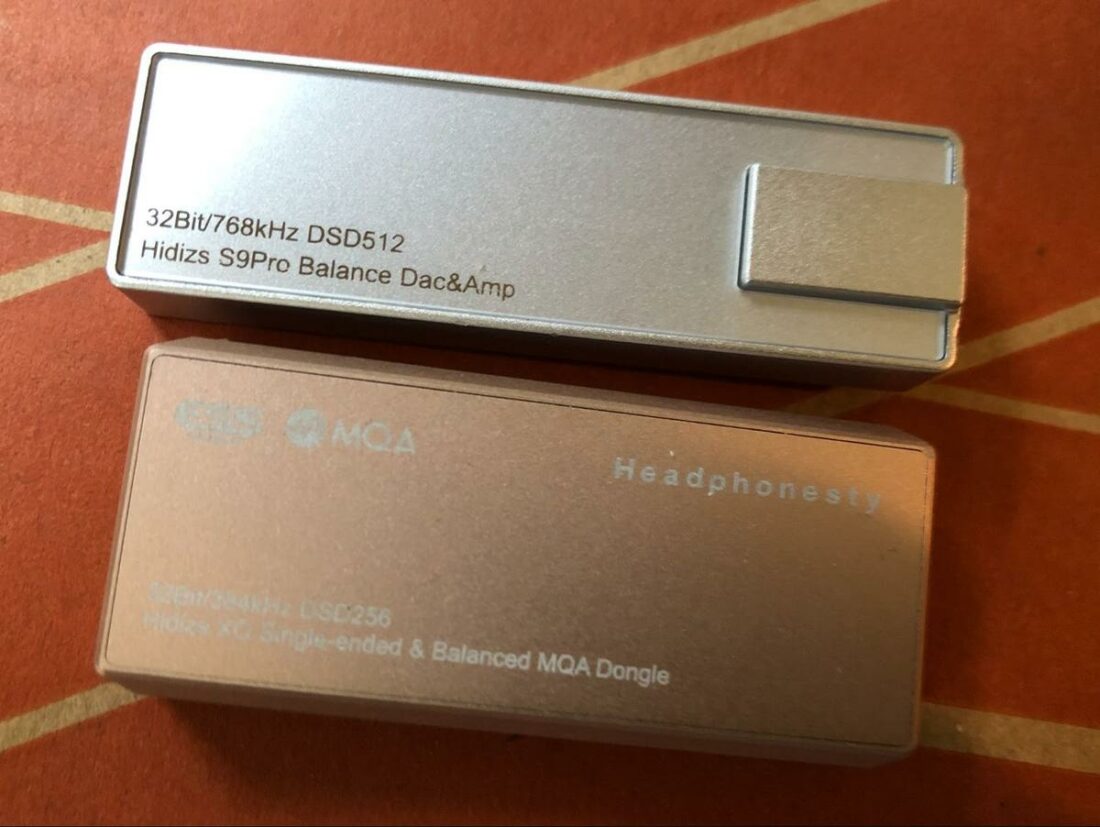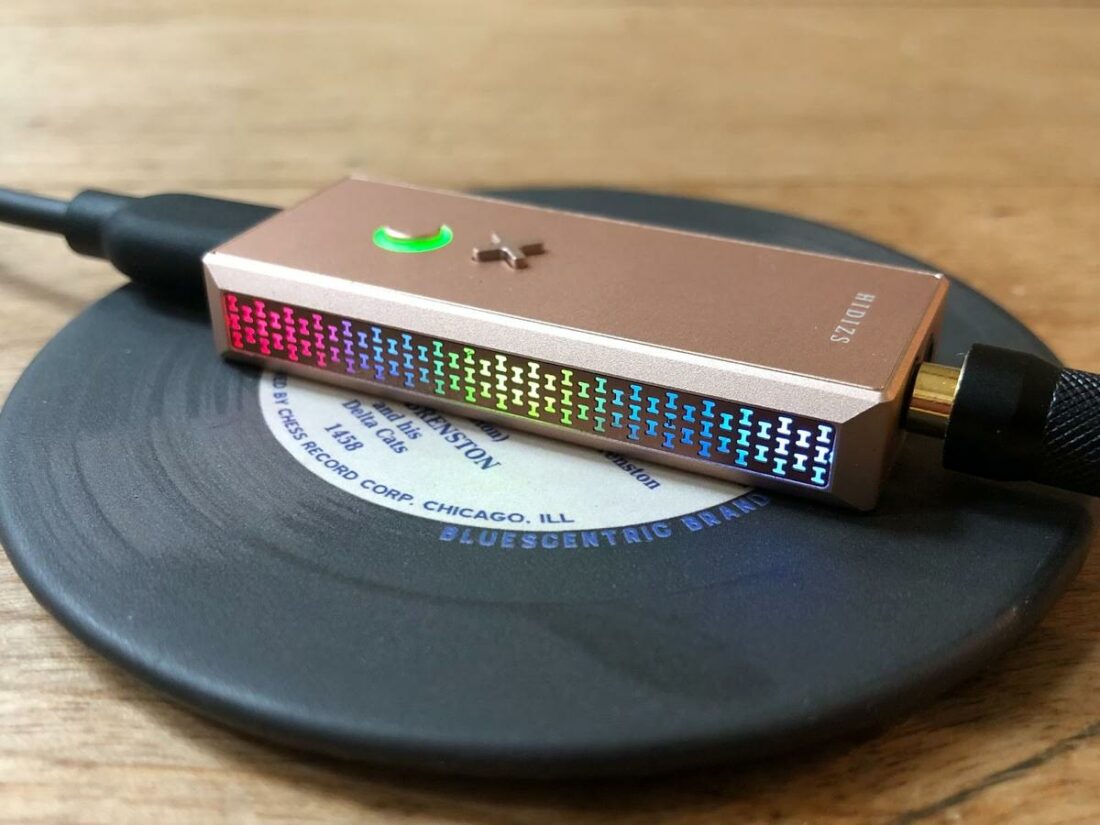If you want to create another product for an already crowded marketplace, how do you differentiate it from the rest? This a question that manufacturers face more and more each day. Fierce competition drives companies to be creative and to offer more features for less money. Sometimes these features are ground-breaking improvements that push innovation and benefit everyone. Sometimes they serve to differentiate a product by making it more attractive to a specific demographic. For the last decade or so, LED lighting has defined gamer style and accessories. What makes a headset, fan, keyboard, or computer case even better? Multi-colored lights, of course! One can transform consumer-grade products suitable for mere mortals into elite gamer-specific weapons with the liberal addition of flashing, breathing, or glowing RGB LED goodness. Indeed, some portable audio enthusiasts are gamers, and it seems Hidizs is aiming their newest portable DAC/amp dongle, the XO, firmly at this group. Two major design factors differentiate this otherwise ordinary tiny aluminum brick from the competition. The first is multicolored LEDs (of course) running the length of both sides. The second is the two prominent buttons on the front surface, an ‘X’ and a glowing ‘O’. The X and O symbols are iconic gaming console controller button labels. In this case, the X rotates through fourteen (!) different lighting effects while the O selects audio filters. Is the Hidizs XO all flash and no substance, or is it a gaming audiophile’s portable weapon of choice? Hugs and kisses or executive officer? Grab a controller, chug a Red Bull, and join me on the couch to find out if “the cake is a lie.”
Company Overview
Hidizs (pronounced ‘hid-is’) was founded in 2009 by a group of technicians with HiFi audio research and development experience that aimed “to produce a superior and affordable pocket HiFi audio device.” In 2010 they started researching the global HiFi audio market, and they officially finalized their team in 2012. The AP100, launched in 2014, was the first music player created by Hidizs. In 2017, they funded the AP200 DAP through Kickstarter. 2018 saw the release of the original AP80 DAP, and in 2019 the Hidizs team branched out and produced the Mermaid MS4 IEMs. Now the Hidizs company offers several different DAPs, IEMs, Bluetooth modules, amplifiers, and accessories.
Technical Specifications
Form: Portable DAC/Amp Chipset: ESS Sabre ES9219C Frequency Response (Hz): 20 Hz – 40 kHz THD+N: 0.0015% 3.5mm, 0.0005% 2.5mm SNR: 118dB 3,5mm, 119dB 2.5mm Crosstalk: 76dB 3.5mm, 118dB 2.5mm Output Power: 78mW @32Ohms 3.5mm, 195mW @32Ohms 2.5mm Removable Cable: Y, USB-c Output Jacks: 3.5mm TRS, 2.5mm balanced TRRS Weight (g): 11 Dimensions: 55 x 24.5 x 9.35mm
Packaging
Hidizs products all seem to come in small black boxes with product pictures on the top and tech specs on the bottom. The XO box is no exception, although the box under the cardboard sleeve is made of plastic rather than paper this time. Inside you’ll find the dongle with the accessories underneath.
In the box
XO portable DAC/amp USB-c to USB-c OTG cable USB-c to USB-a adapter Warranty card
The plain black USB-c to USB-c OTG cable is nothing extraordinary but works well. The included USB-c to USB-a adapter is appreciated, but iPhone users will note the lack of a USB-c to lightning cable.
Design
The XO is a lightweight (11g) small aluminum brick available in three colors, silver, black, and rose gold (as tested). It feels smooth, solid, and well-made. The bottom end has the USB-c port, while the top contains both 3.5mm single-ended and 2.5mm balanced ports. The headphone outputs are close together, so don’t expect to use both simultaneously. The X and O buttons are on the front face, while the back has the ESS and MQA logos, “32Bit/384kHZ DSD256”, and “Hidizs XO Single-ended & Balanced MQA Dongle” engraved in white. Custom engravings also show up on this side. Along both long sides are grills made of tiny ‘H’ shaped holes; this is where the LEDs shine through and give the XO a retro sci-fi look – it makes me think of 1960s Star Trek Enterprise wall grills. The 14 preprogrammed LED patterns flash between red, green, blue, purple, cyan, and pink and are changed by repeatedly pressing the X button. Unfortunately, you must unplug the XO or cycle through all the options to turn the LEDs off. The big miss here is that there is no connection between the music and the light show. Dancing level indicators adding a visual element to the music are a win. Unrelated flashing lights, on the other hand, are not. Around the O button is a multi-color LED ring that indicates the file format currently being decoded. It also changes color between red and blue when selecting the digital filter.
O button LED indicator
Internals
The XO features dual ESS Sabre E9219C DAC chips capable of decoding 32-bit/384 kHz PCM, DSD256, and MQA 16X. These are impressive capabilities for a device this small and affordable. Additionally, high-precision independent crystal oscillators are intended to improve the data connection quality. Signal-to-noise and total harmonic distortion numbers are equally remarkable. On paper, the power output is relatively high, 78mW @32Ohms single-ended and 195mW @32Ohms balanced. This is sufficient for almost any pair of IEMs and efficient full-sized headphones. Planar-magnetic or inefficient headphones will likely require more power than the XO can provide. Since the XO has no internal battery and is powered from the source, I wanted to know the impact of all those LEDs on the battery. I broke out my FNRSI FNB48 USB voltage and current detection meter and tried toggling the XO LEDs between modes and on/off. As expected, the drain fluctuated depending on the LED activity, from about 1.3A (off) to 1.5A (on) – about 15%.
Hidizs XO Sound
I’m a huge fan of the AP80 PRO-X DAP, which shares the same ESS9219C chipset as the XO. Since this chipset is an SoC (System on a Chip) that incorporates both DAC and amplifier functionality, the end sonic result is similar between these two devices. That’s not a bad thing. With the XO, you get a competent, tried-and-true design with sufficient power and sonic quality. Manufacturers using this chipset can do little to improve or change the sound, but this provides assurance that you’ll hear what you expect. Technically speaking, the blue is a linear phase fast roll-off filter. The red is a hybrid roll-off filter. In blind listening tests, I can’t reliably tell the difference between them. It seems a bit of a waste to dedicate the filters to one of the two buttons on the device. Overall, the XO sounds clean, uncolored, and reasonably articulate. It doesn’t significantly alter the music it plays, neither boosting nor reducing frequencies. Think of it as a reliable and accurate portable audio source. It will likely be a more robust and cleaner-sounding output than most phones with a built-in 3.5mm output. The XO preserves the sonic signature of IEMs or headphones that it can adequately drive and adds no unwanted noise or hiss. In use, the XO couldn’t be simpler. The O filter button can be ignored, and the X button changes the light show – plug it in and control your music from the source device. The resulting sound is uncolored and transparent.
Hidizs S9 Pro Comparison
For a few bucks more, the older but well-respected Hidizs S9 Pro offers a little more output power on paper (100mW SE, 200 mW balanced), higher format decoding (but no MQA), and a more impactful sound. In use, the S9 seems more dynamic and powerful than the XO – it’s far louder at the same source volume level. The XO sounds smoother and more rounded off than the S9, the latter gives a crisper impression of higher detail portrayal. To my ears, the S9 Pro is the way to go, and the price difference between the two is fairly negligible these days.
Where to Buy
Official Store
Conclusion
At the near USD$100 price point, the Hidizs XO is a decent option for a portable DAC/amp. The ESS SoC architecture works well, and the XO offers little in the way of sonic surprises – good or bad. It’s very well constructed – small, smooth, solid, yet lightweight. The LEDs are a missed opportunity. Sure, some consumers may be tempted to buy the XO for this novel feature, and perhaps those digging the gaming aesthetic will be entirely satisfied. But wouldn’t the LEDs be so much better if they were synchronized with the music and functioned as level meter bars? Or frequency response meters? Sigh The O filter button is another miss, with currently only two filter options (in correspondence, Hidizs mentioned that they were working on adding a third) that make very little audible difference. Playback or volume buttons would be a more useful choice. The LEDs and X-O buttons make the XO stand out amongst its peers, but in every other way, the XO is a typical, if well-made, portable DAC/amp dongle.

